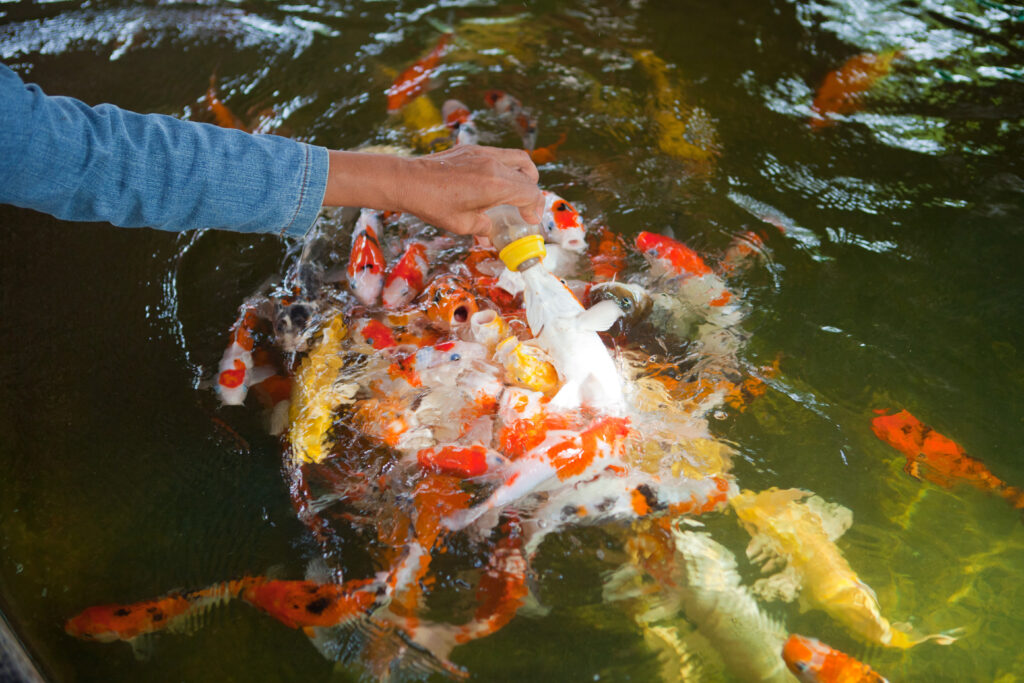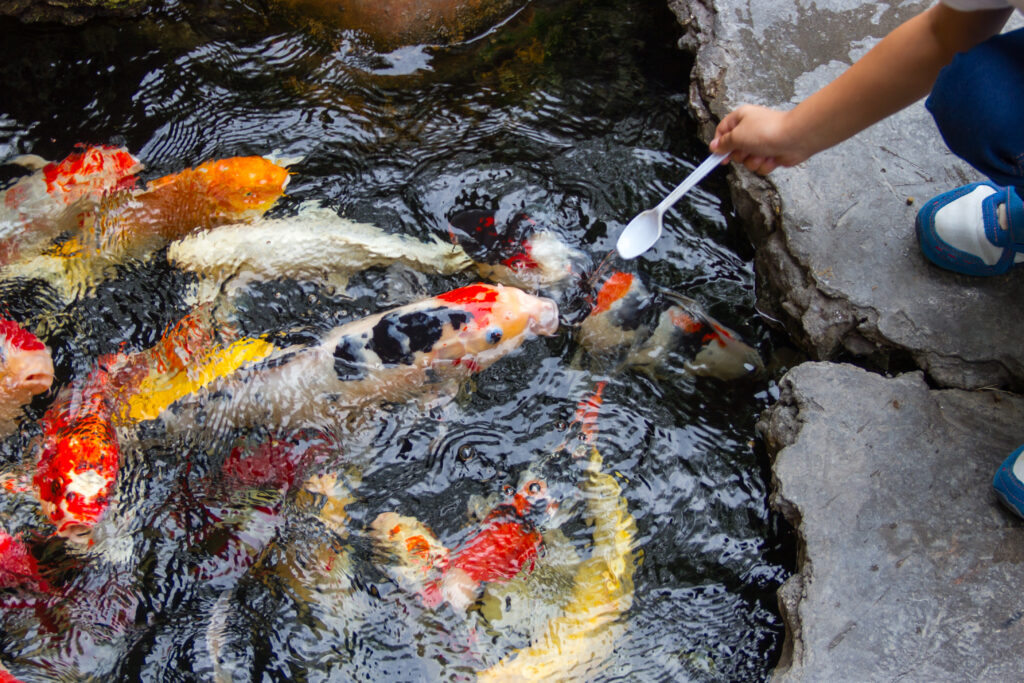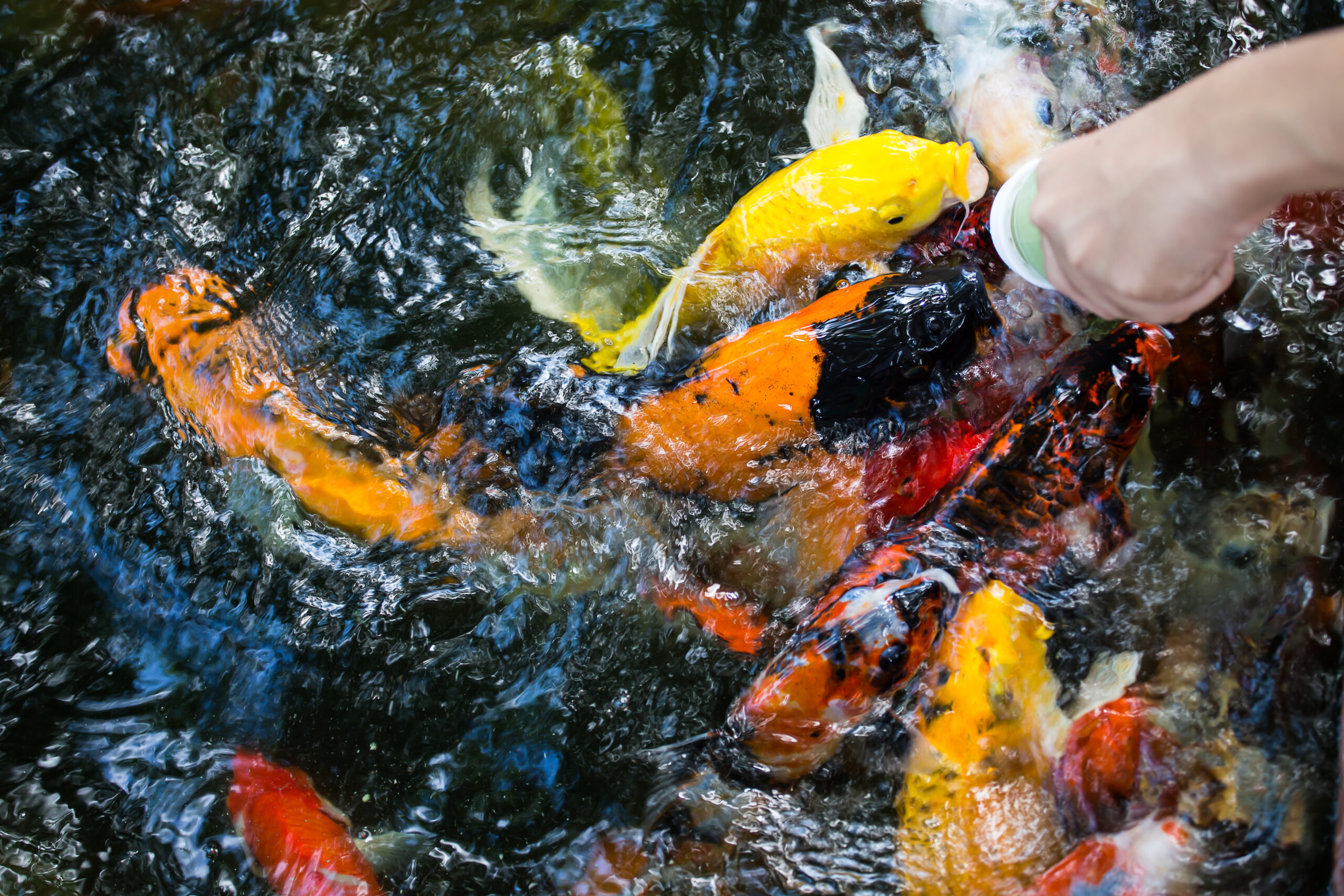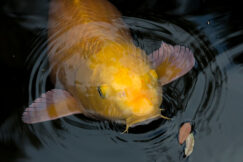Are you a koi fish enthusiast? Do you admire the beautiful colors and patterns of these majestic creatures?
If so, then this blog post is for you! We are here to help guide you through when it is time to stop feeding your koi fish. Keep reading to learn more about the optimal feeding habits for your koi fish.
Understanding Koi Feeding Habits
When kept in the right environment, Koi fish can be quite an enjoyable experience for any pond owner. Understanding the feeding habits of your fish is key to keeping them healthy in the long run.
Koi have been known to go without food for up to three weeks in cooler temperatures. However, feeding them regularly and consistently is important to maintain their health.
Understanding the importance of having a fish pond thermometer to gauge when to stop feeding your Koi fish properly. With this knowledge, you can ensure that your Koi are getting the right nutrition at the right temperature.
Importance of having a Fish Pond Thermometer
Having a fish pond thermometer is essential for any koi fish owner. Knowing the exact temperature of the water is important to ensure the health and well-being of your Koi. The pond’s temperature can determine when you feed your fish and when to stop feeding them altogether.
During winter, when the temperatures drop below 50°F, you should stop feeding completely, as this is the temperature at which Koi cannot properly digest their food. By monitoring the temperature with a thermometer, you can be sure that your koi are getting the right amount of food throughout the season.
Additionally, having a thermometer allows you to keep track of other environmental factors such as pH levels and oxygen content, ensuring that your Koi stay healthy and happy all year round.
Stopping Feeding at the Right Time

It’s important to stop feeding your koi fish at the right time during the fall/winter season.
Once the water temperature drops below 48°F / 9°C, you should stop feeding altogether. In most cases, feeding can be stopped completely around 55ºF (13°c) to minimize any waste leftover, but even if there is a little leftover, it is better not to feed your fish.
Once the water temperatures go below 40°F, it’s time to stop feeding until spring. In the autumn, when really cold weather finally arrives, it is best to stop feeding altogether. As the weather cools, gradually reduce the feedings until your water temperature is below 55 degrees, and stop feeding completely.
It’s also important to remember that although koi fish do not need food in winter, they still need to eat to maintain their metabolism and store fat for winter. Therefore, when temperatures rise reliably above 60°F (15°C), you can start feeding your koi fish twice daily with easily digested food.
Ensuring Proper Gas Exchange
It is essential to ensure proper gas exchange for koi fish. Koi need oxygen to survive, and the water needs to be properly circulated to provide enough oxygen. If the water is not properly circulated, it can lead to a lack of oxygen and cause health problems for your koi fish.
To ensure proper gas exchange, make sure your pond has a good filtration system and that you also have a good aeration system in place. This will help to keep the water well-oxygenated and will help keep your Koi healthy and happy.
Koi Fish Need to Eat in Winter Too
Koi fish also need to eat in winter, even though they are in a dormant state. Despite their slower metabolism, they still require nutrients to remain healthy and strong. Therefore, it is important to feed them high-quality food when the water temperature is above 50° F.
This will ensure that they have enough energy to survive the cold winter months and have stored fat reserves for the upcoming spring. When the temperature drops below 50° F, you should stop feeding altogether until spring. Always monitor the water temperature so you can adjust your feeding schedule accordingly.

Storing Fat for Winter
Koi fish are known to store fat during the spring and summer months to help them survive during the winter. This resembles how bears prepare for a long winter by storing food for the cold months. Koi fish will utilize this fat to provide energy during their hibernation-like state.
To ensure that they have enough fat stored in their body, it is important to feed them well in the spring and summer months. Overfeeding should be avoided in the late fall and winter as Koi will stop eating when the water temperature drops below 50 degrees Fahrenheit. By ensuring that they have enough fat stored, they will be able to survive winter without having to rely on food.
Water Temperature Determines Feeding Schedule
When the temperature is between 50-55°F (10-13°C), feeding should be reduced to once every few days. Once temperatures remain below 48°F (9°C), feeding should be stopped altogether.
Although fish may still eat food below this temperature, it can often do more harm than good as the fish will not be able to digest it properly. It is important to note that Koi’s metabolism is dictated by water temperature; the higher it is, the more food the digestive system of a koi can process.
Thus, when temperatures are higher, Koi can be fed more frequently and in larger quantities, while they need to be fed less often and in smaller amounts during colder months.
When to Stop Feeding Altogether
When the temperature drops below 50 degrees, it’s time to stop feeding koi fish altogether. This is because as the water temperature decreases, the metabolism of your fish dramatically slows down.
To make sure your fish are safe and healthy in the winter months, it’s important to stop feeding them when the water temperature reaches this level. If you’re lucky, your Koi can store fat over the winter months and get through without eating anything at all.
Otherwise, try to feed them small amounts of easily digested food once the temperature rises reliably above 50 degrees. It’s also important to ensure proper gas exchange during this period to keep your Koi healthy.




